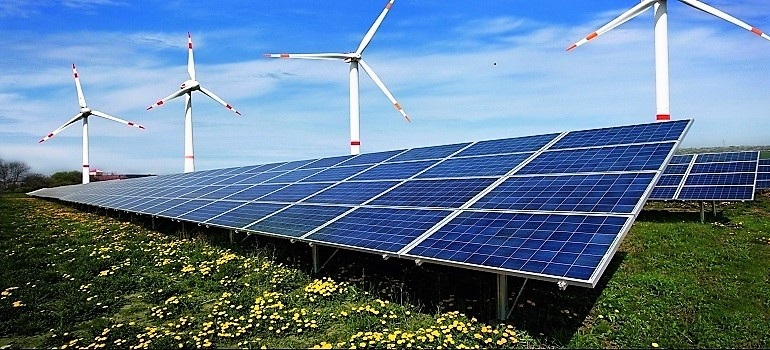
Winds of change in alternative power generation are sweeping across western Rajasthan with wind and solar energy producing surplus electricity for the tenth successive year considerably reducing greenhouse gas emissions.
In Jaisalmer region, the total installed wind power capacity is 3933.52 MW and solar energy production is 113 MW, a senior official said.
“On an average, the windmills generate 25 to 30 per cent of the total installed capacity,” the official said.
The combined production of solar and wind mill energy is much higher than the average energy requirement varying between 130 MW and 140 MW in Jaisalmer district, he said.
This reduces the dependence on thermal power plants or gas turbines which causes air pollution, the official said.
While wind power generation started in 2001-02, solar energy got a boost five years back in western Rajasthan.
“Since the last ten years, there has been no power shortage in this region with production being higher than the requirement,” the official said.
The Union government has set a national target of installing one lakh MW grid connected solar power capacity in the country by 2022, according to the Ministry of New and Renewable Energy.
A total grid connected solar power generation capacity of 31,696 MW has been set up in the country till October 31, while projects of 17,998 MW capacity are at various stages of installation, it said.
To boost alternative power generation in the desert region, the Jodhpur-based Central Arid Zone Research Institute (CAZRI) has designed and developed a concept of integrating solar energy-based electricity generation and crop production from a single land unit, referred to as agri-voltaic system, principal scientist Dr Priyabrata Santra said.
“We have also developed a unique rain water harvesting system for cleaning solar panels set up between rows of plantations in agricultural fields,” Santra told a visiting group of journalists here.
With water being scarce in the desert region, this will go a long way in providing supplemental irrigation to the land on which both solar energy is generated and crops are grown, the CAZRI scientist said.
He said that rainwater harvesting system from top surface of photovoltaic-module (solar power panel) has been designed and developed with an estimated annual rainwater harvest of 1.5 lakh litres from 105 kW system, which is enough to provide supplemental irrigation of about 37.5 mm in one acre land.
“This system ensures optimum use of land since the rows of solar panels and crops run parallel to each other, thus using the ground between each other,” Santra said.
People are also being encouraged to set up solar panels on the roof of their houses, a senior official of Jaisalmer circle of Jodhpur Power Distribution Corporation Ltd said.
The houseowners can use the power generated from the panels and pool the surplus into the grid, the official said.
He said that maximum wind energy is generated in Jaisalmer and also in Bikaner and Barmer of western Rajasthan, with six private companies involved in the business.
Source: PTI

